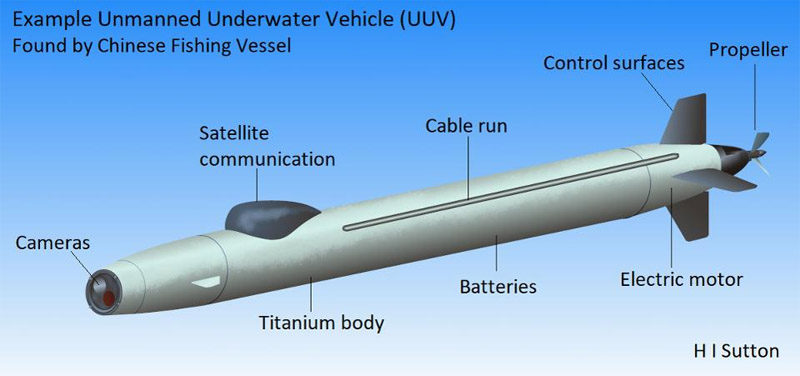Indian Navy’s Robust Surveillance Mechanism To Track Chinese UUVs In Indian Ocean
24 March, 2020
Presence of Chinese research vessels deep in the Indian Ocean Region (IOR) has been a known fact. Oceans being Global commons, there is very little which any country or Navy could do to stop these activities by the Chinese Navy opines a former Indian Navy officer. Sharing his views with the Financial Express Online, former spokesperson of the Indian Navy Capt DK Sharma says, “The Indian Navy has a robust surveillance mechanism spread all over in its ‘Area of Operations’ with its assets suitably deployed to maintain a clear picture of activities being undertaken by extra-regional navies as well as to monitor white shipping (Merchant vessels traffic) operating in Sea lanes of Communications (SLOCs).”
“India has been wary of the dubious designs of PLA (Navy) in our Area of Operations since 2008 wherein they started sending warships for Anti Piracy Operations in/ off the Gulf Of Aden. This Anti-Piracy Escort Force (APEF) comprised two-three warships with a support ship in tow. Presence of submarines both conventional and nuclear, as a part of APEF, surprised the world and was taken note of. The increase in the size of APEF and also the presence of Oceanographic Research and similar ships in IOR has been common knowledge,” Sharma explains.
However, “they (Chinese Navy) have a serious objection to any Navy operating in the South China Sea and claim it to be their sovereign territory,” he adds.
Recently, Forbes carried a report titled `China Deployed 12 Underwater Drones In Indian Ocean’ by H I Sutton. The report quoting sources talks about the deployment by the Chinese of Uncrewed Underwater Vehicles (UUV) since last December which had completed 3,400 observations until last month.
Does the Indian Navy have these UUVs? The answer according to a senior naval officer is “The Indian Navy has other gadgets that do the same work but not of the level like the Chinese.”
“The operations of glider UUVs in Indian Ocean Region by the Chinese side is to prepare the arena for successful submarine operations in this region” said a senior officer.
What Are Unmanned Underwater Gliders
The Unmanned Underwater Vehicles (UUVs) used for underwater work like ship’s hull inspection etc. remains underwater for a limited duration. “However, these UUVs used by Chinese side were special unmanned underwater drones called ‘underwater gliders’ which can remain in the ocean for long-duration like two weeks to months. These gliders do not have an engine or a propeller and moves in water using the buoyancy principle. When lowered in water from a ship, and on receipt of an activation command from the ship or a satellite, the glider’s onboard navigation system is cut into action and weight (like battery weight) is shifted forward and the glider takes a dive into the ocean water,” explains C4I expert Milind Kulshreshtha.
According to him, “The Port and Starboard wing configuration along with the tail fin helps glider move through the water and after levelling out by bouncy, it commences the ascent phase. While in the journey, the glider is capable of picking up data using onboard sensors for Temperature variation with depth, water salinity etc. With this buoyancy movement, the glider can travel about a kilometre horizontal distance and with an ability to stay in water for a longer duration is capable of covering up to 24 km in a day. This arrangement provides a high spatial resolution ocean water data, which is continuously stored in the onboard hard disk and, time to time, transmitted back to the mother ship or a satellite using a tail-mounted radio antenna.”
Role of Glider UUVs
The underwater profiling of ocean — parameters like temperature gradient variation of the depth change or salinity variations are important information when it comes to submarine operations. “The underwater ranges at which submarine sonar (Sound Navigation and Ranging) equipment can detect enemy warship is highly dependent on such parameters. These go a long way to plan warfare tactics. On the other hand, the warship’s onboard fixed hull-mounted sonar or towed array sonar’s ranges too are highly dependent on these ocean parameters and assist in Threat perspicacity computations,” explains the C4I expert.
At any given time, our own ships and the enemy submarine, both are always keen to be aware of weather-related profiling of ocean waters.
The measurements made by the Chinese UUVs should be the primary focus for Indian Navy too, in order to maintain the sonar range advantage. Detection of signal in the presence of background noise and within multi-layer ocean waters are the key to winning for each side.
Courtesy: Opera News/yahoo.com

